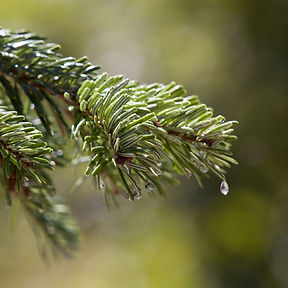



Avène
Controlled management of Avène thermal water
Avène Thermal Spring Water is under close surveillance. Numerous checks are carried out each year by our Water Laboratory to guarantee its quality. At the same time, its capture and use are strictly controlled.
More than aware of the importance of ecosystems and soils in the quality of Avène thermal water, we are developing numerous actions on the watershed site. Each of the site's entities is committed to sustainable management methods, to protect this unique and natural resource.
A beneficent nature
Genesis of Avène thermal water
Avène Thermal Spring Water is contained in rocks, called “Dolomites”, which were formed 530 million years ago. These rocks are permeable reservoirs, approximately 500 meters thick, very inclined. This is what allows Thermal Water to circulate at great depths, more than 800 meters underground. Around, the rocks are composed of shales and low permeable sandstones.
The Avène impluvium is the surface which collects rainwater which will form Avène thermal water. These waters infiltrate directly into the Dolomites or run off into areas with low permeability via watercourses.


The emergence of Avène thermal water
After infiltrating the surface of the impluvium, rainwater slowly migrates into the depths of the rock.
As it circulates in the Dolomites, it is gradually enriched with elements from the rock. It heats up to around 60°C.
At the end of its journey, lasting 50 to 200 years, the Thermal Water rises naturally, cools slightly then emerges at the Sainte-Odile Source, located at Bains d'Avène. Today, 3 boreholes capture Avène thermal water to supply the Thermal Station and the production unit.
Forests protecting groundwater
The trees surrounding the Avène watershed maintain soil moisture and are essential to preserving the integrity of our water resources.
This is why we are seeking the expertise and recommendations of the National Forestry Organization (ONF) to help us ensure the sustainable management of the forest park.



